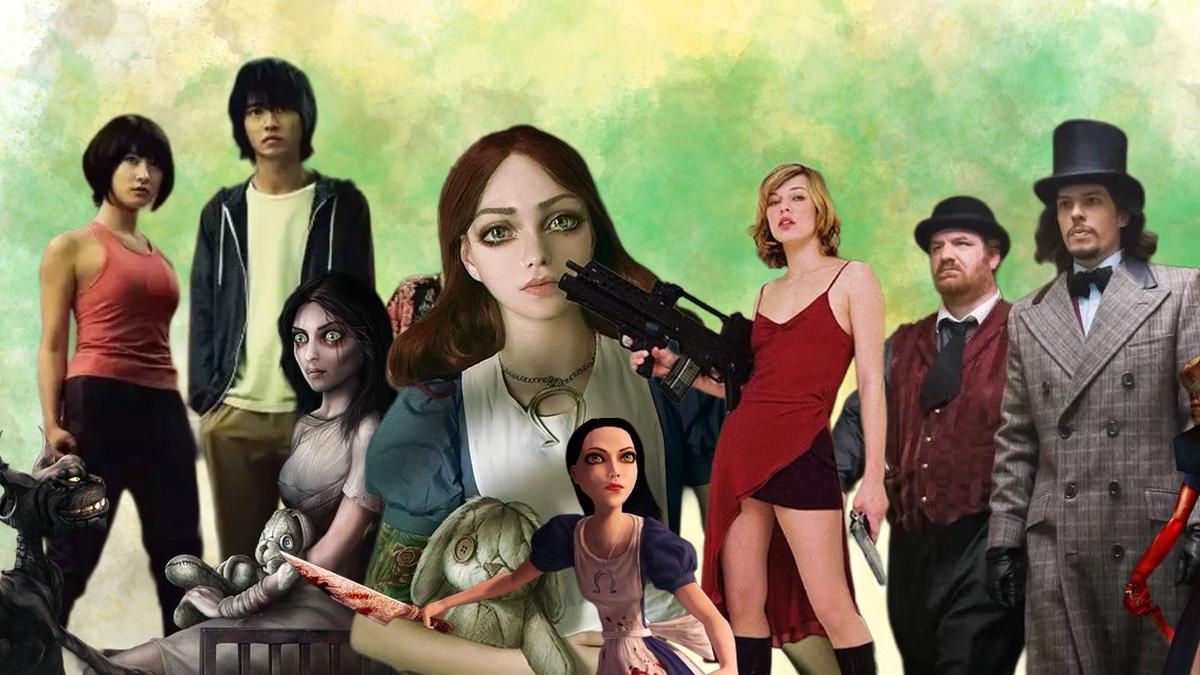On September 25, Netflix released the third and final season of its popular Japanese sci-fi thriller series Alice in Borderland. The show’s protagonist, the lonely, video-game obsessed Arisu (Kento Yamazaki) is trapped in a dystopian version of Tokyo (…the Borderland) alongside his friends as they are forced to participate in a series of sadistic games styled after various cards from a deck. Essentially, the show serves up gnarly, blood-soaked kills and non-stop cliffhangers a la Squid Game, wrapped up in rapid-fire riddle-dialogues. Every episode has the narrative ebb and flow one typically associates with a well-made, high-concept video game. This is as close to ‘gamified’ television as you’ll ever get.
And yet, even more than video games, the principal stylistic influence on the show is (as its name suggests) Lewis Carroll. Several characters are named after their Carrollian counterparts — Arisu himself is Alice, of course. His fellow player, ally and later, romantic interest, Yuzuha Usagi (Tao Tsuchiya) corresponds to the White Rabbit (usagi is rabbit in Japanese). The enigmatic player calling himself Chishiya is the Cheshire Cat, and so on. It’s incredible that the book that continues to inspire creators and artistes from around the world is going to complete 160 years soon: Alice in Wonderland (first published in November 1865). Films, books, TV shows, video games; Carroll’s iconic work has quietly influenced a whole lot of 21st century pop culture, across media.
I was first exposed to a Carroll-inspired work in my teen years, in the early 2000s, when the action-adventure video game American McGee’s Alice was getting rave reviews for its imaginative character re-interpretations from Alice in Wonderland and Through the Looking-Glass (1871). American McGee’s Alice (and its sequel) presented players with a grim, pessimistic version of Carroll’s world, and had them navigate the heroine through a series of monstrous creatures and tricky puzzles which, in true Carrollian fashion, deployed rhyming verses and wordplay. In 2007, the British comics writer-artist Bryan Talbot released Alice in Sunderland, an experimental work of graphic non-fiction which explored Carroll’s links with the history of north-east England’s Sunderland area — as well as broader themes of myth-making and storytelling. One of the most interesting sections of this book explores how Carroll mined local myths and legends, and tweaked them for a juvenile audience. Jabberwocky’s character, for example, has certain common elements with ‘the Lambton worm’ legend, indigenous to the region.
Today’s streaming era has seen several TV shows borrowing from the Alice in Wonderland lore. The Batman universe’s minor-villain pair Tweedle-dee and Tweedle-dum and the more prominent supervillain the Mad Hatter, who speaks in rhyming couplets like his Carrollian namesake. On the Fox TV series Gotham (2014-19), the Mad Hatter was played by a suitably deranged-looking Benedict Samuel (Owen from The Walking Dead, 2010-22). The Resident Evil film franchise (2002-16), too, has several storylines inspired by Carroll’s work, as does the cult thriller series Lost (2004-10), which named its third-season finale ‘Through the Looking-Glass’.
Alice in Borderland succeeds in presenting these perennially popular characters in new-old, novel-but-recognisable skins. In most of the aforementioned books, films and shows , the Carrollian influence was used to signify mystery or intrigue. …Borderland makes a conscious choice to lean into the horror aspects of Carroll instead — essentially, a higher-budget version of the same move American McGee’s Alice did all those years ago. Towards the end of season 2, one of the villains tells Arisu, ‘Life is just a game that we play with ourselves’ and that line neatly summarises the nihilistic world view of …Borderlands.
Then, is the beloved children’s classic Alice in Wonderland secretly a horror story? The answer is both yes and no. Carroll wished to move away from the preachiness of his era’s children’s literature. He believed children didn’t need protection or condescension from their books, in addition to the adults in their lives. He wanted to create a text using mathematics, logic, puzzles alongside nonsense verse and pantomime silliness — the polarity was rather the point. Therefore, if adult readers find horror in these stories it is because of the unvarnished weirdness of Carroll’s characters, which he refused to dumb down for the kids.
Carroll would have rather enjoyed Alice in Borderland, especially the scene where a character is forced to hack off their own leg in order to survive.
The writer and journalist is working on his first book of non-fiction.
Published – October 02, 2025 05:34 pm IST
